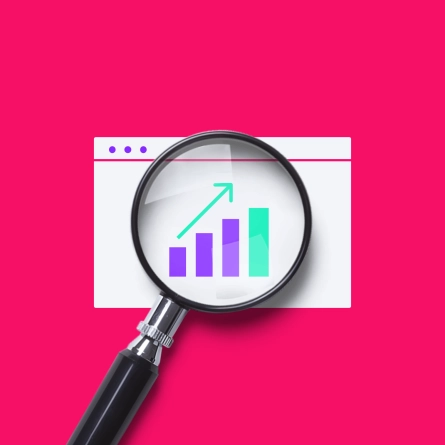You Just Launched a New .EDU Website. Now What?
Your new college or university website was just released into the wild. If everything went according to plan, the launch was smooth, the content is on point, and user experience glitches are non-existent. Here’s what should come next.
To be sure, this “new website honeymoon” is an exciting time, and your digital marketing team should take time to celebrate while carefully avoiding the all-too-common complacency trap: thinking they can now move on to other tasks while letting the site sit idle until its next redesign.
On the contrary, now is the time to make and execute a long-term plan for website management and optimization to ensure your new site looks good, works well, and achieves its goals for many years to come.
The following tasks should be at the top of your new website “to do” list:
Get a Handle on Analytics & How Your Site Is Performing Out of the Gate
There are a series of analyses that will help you paint a full picture of your new site’s performance. They include:
Search & Keyword Patterns
Leverage search and keyword data for insights into what leads visitors to your site — and equally as important — what pushes them away. In addition to showing why you may be missing valuable search traffic from key audiences like prospective students, ongoing search pattern analysis helps to inform your long-term content strategy, future visual or UX design updates, additional course offerings, and digital marketing campaigns.
Questions you’ll want to answer include:
- What are the most common words users type in when they’re searching for higher education websites like ours? You’ll want to ensure the most common words and phrases are well represented in your content.
- How do they refine those searches within their session? Make sure your copy accounts for these nuances in search behavior.
- And what do they ultimately click on? Prioritize these sections within the overall user journey as prospects move through your conversion funnel.
Competitors
Regular review the content, messaging, user interface, and overall customer journey of your peers and aspirational competitors. Take note of how well they’re meeting market needs, areas in which they’re falling short, and how this can help you stand out in the crowded and highly competitive digital higher ed marketplace.
Website Analytics
This is a high-level look at what’s happening on your site and how to improve it — from user demographics and behavior to SEO results, traffic sources, top referring sites, best (and worst) performing pages, and most productive keywords. In short, it provides a snapshot of overall website health.
Which Website Key Performance Indicators (KPIs) Should You Be Tracking?
KPI #1: TOTAL TRAFFIC/PAGE VIEWS
How many people are accessing your site?
This is probably the most common metric in website analytics, but it’s also the easiest to overvalue. Page views are only valuable if they are relevant to your conversion goals. For example, you may have some content that attracts extra attention through organic search, but if that content is not relevant to your overall conversion funnel, looking at overall traffic and page views offers little insight into performance or conversion optimization.
KPI #2: SESSION BEHAVIOR
What do visitors do when they reach your site?
Are visitors engaging with your content, or do they immediately “bounce” from the site having not actually gotten what they came for? Or maybe your content is highly relevant to a set of users that will never actually become leads?
For example: A university with detailed technical articles about higher education teaching principles that help professors but don’t resonate with other main audiences like prospective students and parents. In that case, it would probably be best to add additional content into the mix (although the technical content should almost certainly remain for the sake of Google’s search quality guideline of Experience, Expertise, Authoritativeness and Trust (E-E-A-T).
KPI #3: ACQUISITION
Where are users coming from when they land on your site?
Are you getting the bulk of your traffic from your social media account? Mostly organic search? Paid ads?
Data about acquisition is extremely important in informing where you should invest time and energy — but it shouldn’t be assessed in a vacuum. If most of the traffic from organic search fails to convert, it might not be as valuable as it looks on the acquisition report. Which brings us to our next metric:
KPI #4: CONVERSIONS/LEAD GENERATION
How many visitors completed the action(s) you wanted them to take?
Page views are likely only valuable if they generate leads. If an increase in page views doesn’t correlate with an increase in conversion, your site is likely suffering from user experience or content strategy deficiencies.
KPI #5: PAGE SPEED & LOAD TIME
How long does it take for your site to load?
Google Core Vitals performance metrics are used to influence your search positioning. If your site is slow, your bounce rate — the number of people leaving your site before meaningfully interacting with it — will increase significantly. The site will also lose search positioning to faster competitors.
Set Aggressive but Attainable Goals for Future Performance
The KPIs noted above are an important step in assessing the success of your website, but they are only indicators. In isolation, the data can’t tell you what your goals should be or whether you’re meeting them.
This is where Objectives and Key Results (OKRs) come into play.
OKRs are just what they sound like: Goals, which may be high-level and not very well defined, along with primary results, which should be quantifiable and measurable.
Here are some examples of meaningful OKRs you may want to consider for your new .edu site:
Objective #1: Increase qualified leads
KEY RESULT 1:
New website generates 20% more inbound leads than current website
KEY RESULT 2:
Increase the ratio of total leads to qualified leads by 30%
Objective #2: Increase search visibility
KEY RESULT 1:
20% improvement in search positioning for top 5 non-branded keywords
KEY RESULT 2:
Positioned in top 3 local search results for geographically targeted keyword
Objective #3: Increase brand awareness
KEY RESULT 1:
Double the amount of total posts on social media accounts
KEY RESULT 2:
Increase social media followers by 30%
KEY RESULT 3:
Increase social media as an acquisition channel to the website by 10%
Establish a Plan for Maintenance & Support
Ensure that your in-house team can quickly resolve bugs, optimize uptime, and ensure your site is healthy and performing well via routine site testing, day-to-day maintenance, CMS platform updates, and security patches. If they don’t have the capacity for these critical tasks, outsource them to a trusted third party.
Ensure Access for Users of All Abilities
ADA compliance isn’t just the right thing to do — it’s the law — so you’ll need to ensure your website is accessible to everyone, empowering your college or university brand to reach wider audiences and protect against potential lawsuits.
Your strategy should include:
- Properly using meta data
- Following the right page headline hierarchy
- Including descriptive ALT tags for all images
- Using heading tags appropriately, and always in the right order
- Making link text meaningful (don’t use “read more…”)
- Providing captions and transcripts for all audio/visual media
- And more
For a full discussion on this topic, read A Guide to Web Accessibility for Designers, Content Managers, and Developers.
Keep Content Fresh & AI-Friendly
Today’s AI-powered search engines understand content and assess the total search experience, so it’s critical that your content is updated regularly and optimized for your higher ed audiences. Tried-and-true technical SEO best practices — combined with a user-centric, content-focused approach — ensure your site will be rewarded for providing authentic, valuable content.
How Eastern Standard Can Help
Have questions about establishing a long-term .edu website management and optimization plan? Reach out. Our team will be happy to discuss solutions with you.
Q&A
What analytics should you track after launching a new .EDU website?
Key metrics include search and keyword patterns to understand what brings visitors and informs content strategy, competitor analysis to identify market opportunities, and website analytics covering user demographics, behavior, traffic sources, and top-performing pages. These insights provide a snapshot of overall website health and guide optimization efforts.
What are the most important KPIs for higher education websites?
Essential KPIs include total traffic and page views (valuable only if relevant to conversion goals), session behavior to measure engagement and bounce rates, acquisition data showing traffic sources, conversions and lead generation metrics, and page speed and load time which affect both user experience and search positioning.
How should universities set goals for their new website?
Use Objectives and Key Results (OKRs) that combine high-level goals with quantifiable results. Examples include increasing qualified leads by targeting 20% more inbound leads, improving search visibility with 20% better positioning for top keywords, and boosting brand awareness through increased social media engagement and followers.
What ongoing tasks are essential after a .EDU website launch?
Critical ongoing tasks include establishing maintenance and support plans for bug fixes and security patches, ensuring ADA compliance for accessibility across all abilities, and keeping content fresh and AI-friendly. Regular updates optimized for both users and search engines ensure long-term website success and protect against potential lawsuits.
Eastern Standard helps colleges and universities create compelling digital experiences. Our website design team specializes in engaging prospective students for higher education institutions. Contact us to elevate your .EDU website.



